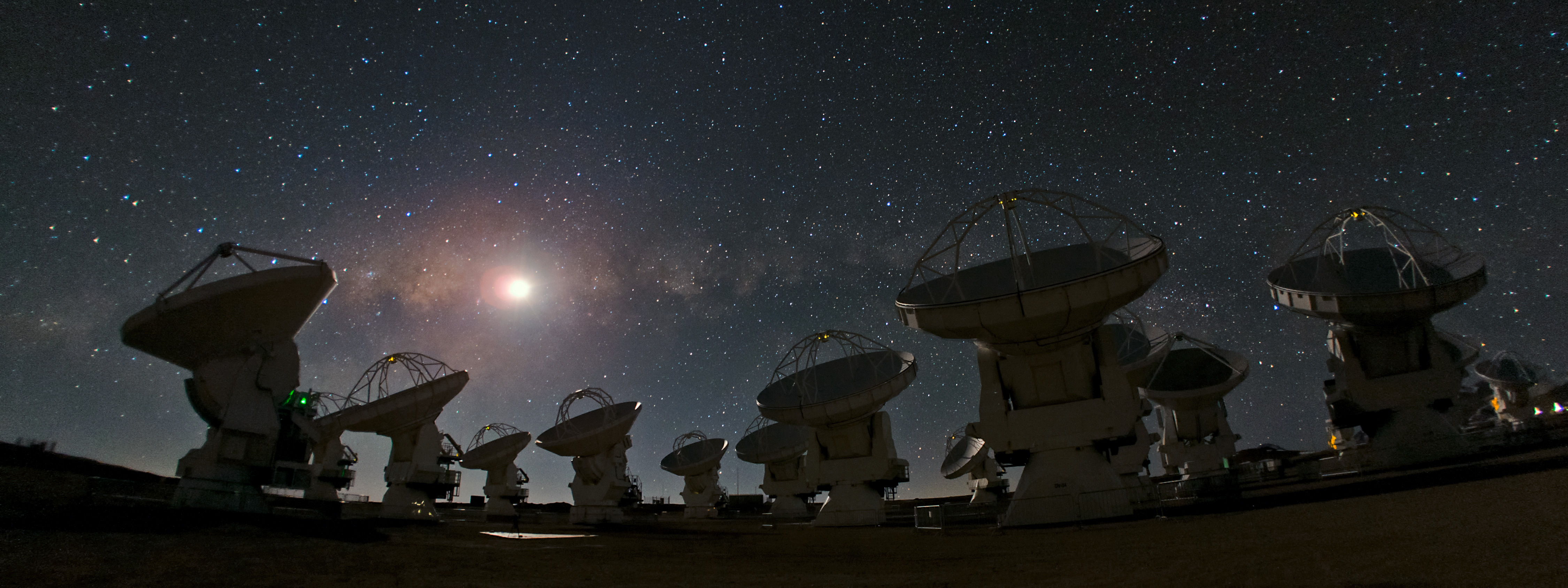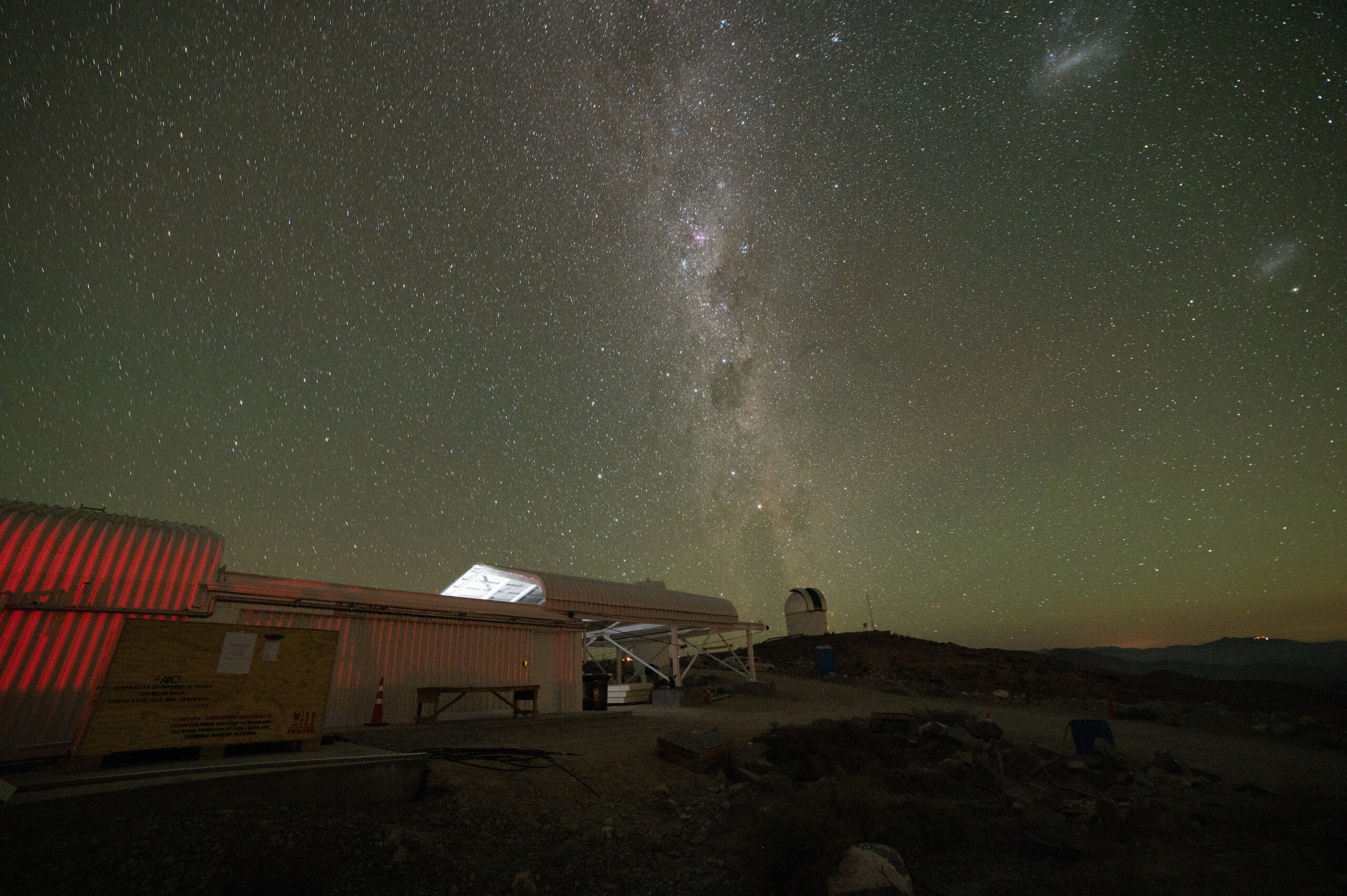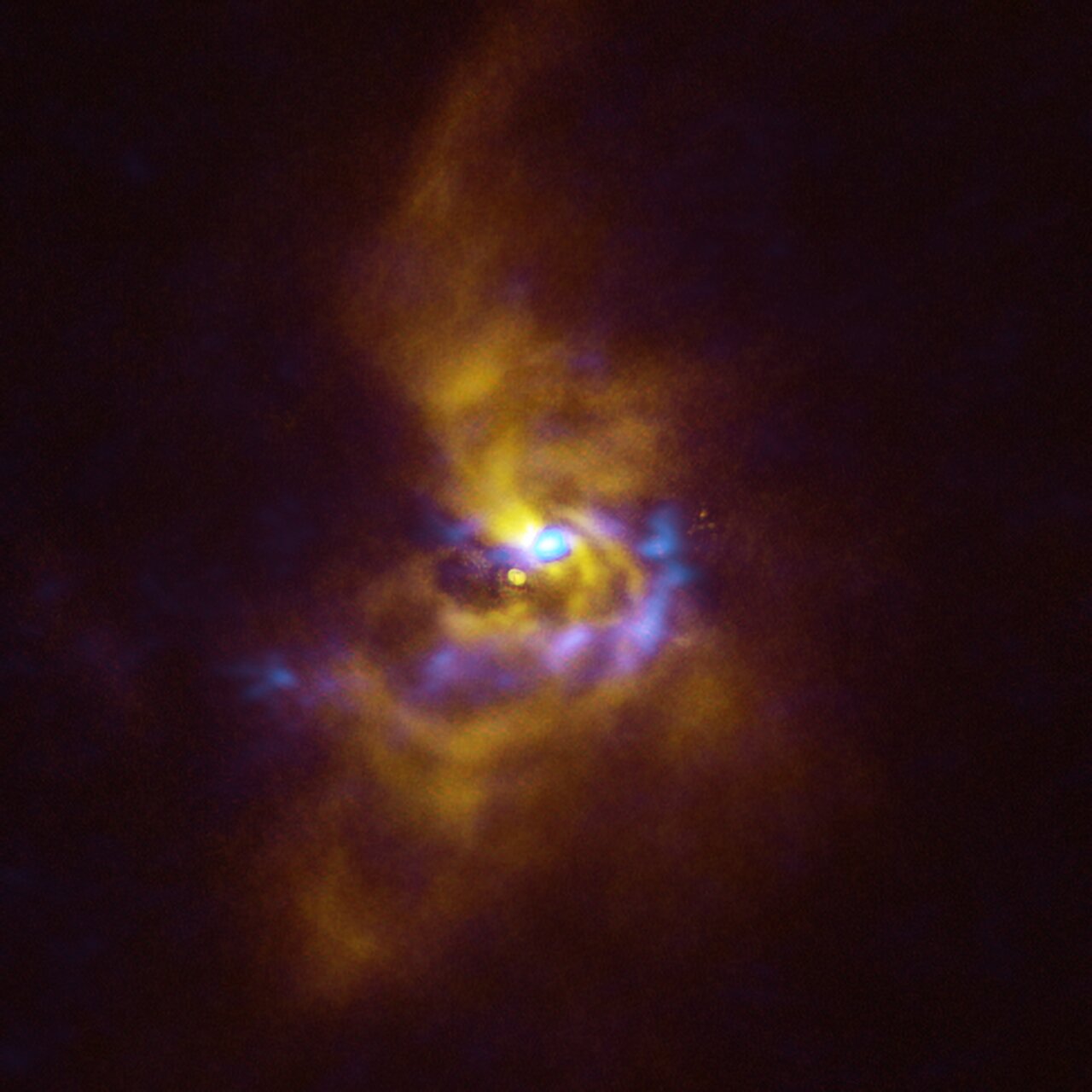
ALMA gives 125.7 hours to the Astronomy Nucleus to understand how the youngest planets and the oldest galaxies form.
Members of Astronomy Nucleus applied with their research projects for using one of the largest radiotelescopest of the World.

Researchers of the Astronomy Nucleous UDP obtained 125.7 hours for using the for using the ALMA telescope for their research. The telescope gives 400 hours to chilean institutions.
The astronomers Lucas Cieza, Manuel Aravena, Jorge González and Tanio Diaz-Santos are those that obtained the largest fraction of time. Their investigations vary from planet and star formation to active galactic nuclei, among others. These observations will be carried starting in October 15th of this year.
Roberto Assef, director of the Astronomy Nucleus of UDP, emphasises the importance of having a large quantity of hours for observations: “Large part of our research comes from the long wavelength detected by ALMA. This will allow us to carry out important projects in the next years.” Applying for observing time with ALMA has become very competitive, and having obtained such large number of hours shows the world-class science performed by the astronomers of the Nucleus.
What are the investigations of the Astronomy Nucleus?
One of the projects that will be benefited with the future observations is the ODISEA project, lead by Lucas Cieza. It aims to study hundreds of protoplanetary disks in the Ophiucus region, at 500 light years from Earth. They have already observed 300 disks in that region and for this new study, a selection of the 10 most important ones will be followed up with higher quality observations with ALMA. In the past, only one minute of observation was given to each object of this region, this time a full hour will be dedicated to 10 objects with the aim to have a more detailed picture of the systems. Lucas Cieza explains that with the 10.9 hours obtained “we aim to gather new information about the physical process that give origin to planets. These new ALMA data will keep us at the frontier in a research field which is very competitive. ”
The astronomer Manuel Aravena presented 2 projects that were accepted by ALMA with a total of 54.2 hours of observing time. One of them is to investigate the structure of the cold gas in some of the most distant galaxies in the known Universe. The study aims to see the morphology of such galaxies to see if they have disks like our own Galaxy, or if they are just agglomerations of clouds. Currently there is very little information about early formation of galaxies and this project aims to find out how they “look like”.
The second project aims to understand the chemical composition of very distant objects, but in galaxies that are much brighter than the aforementioned ones. The idea is to detect molecules that are formed less than thousand millions years after the Big Bang. This is only possible to detect with ALMA, but it will be very challenging. The trick is to observe gravitationally lensed galaxies, i.e. galaxies that look brighter because of the presence of a gravitational lens in the field of view. ALMA will be able to detect the emission or absorption of light of these weak molecules. The presence (or absence) of such molecules will help us to understand the chemical imprint of the first moments in the life of a galaxy.
These observations will allow Manuel Aravena to “understand better the way that galaxy formation works in the Early Universe, contributing substantially to the Field.”
Finally, one of the projects that seeks to study a galaxy with a supermassive black hole is lead by the post-doc Jorge Gonzalez, who obtained 24.6 hours of observing time. This galaxy is very distant and bright, and resulted as a product of merging of smaller galaxies. It has an active nuclei, which means its supermassive black hole at the centre is accreting material and releasing energy, which we detect in the form of visible light. The new observations will allow us to study the gas of this galaxy with an unprecedented detail. “The amount of information from the ALMA data will keep us occupied for long time”, says Gonzalez.









